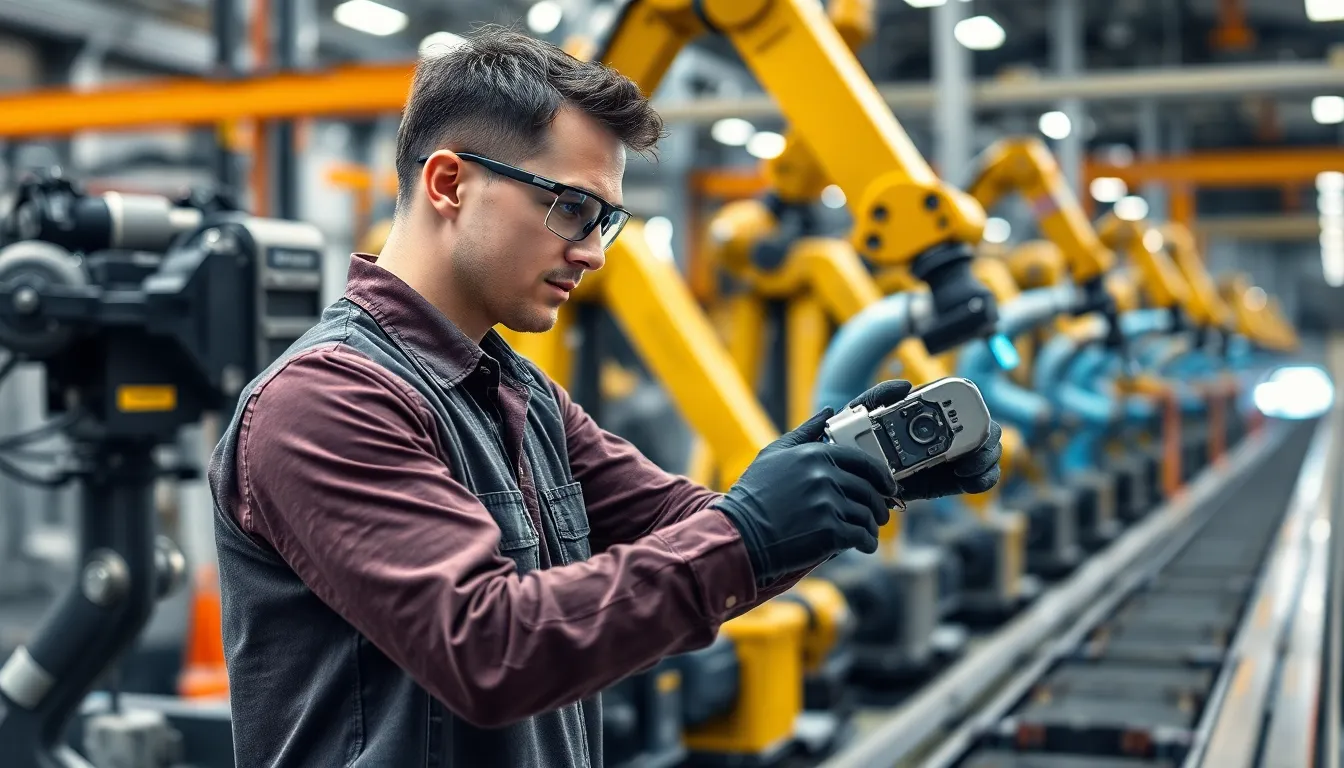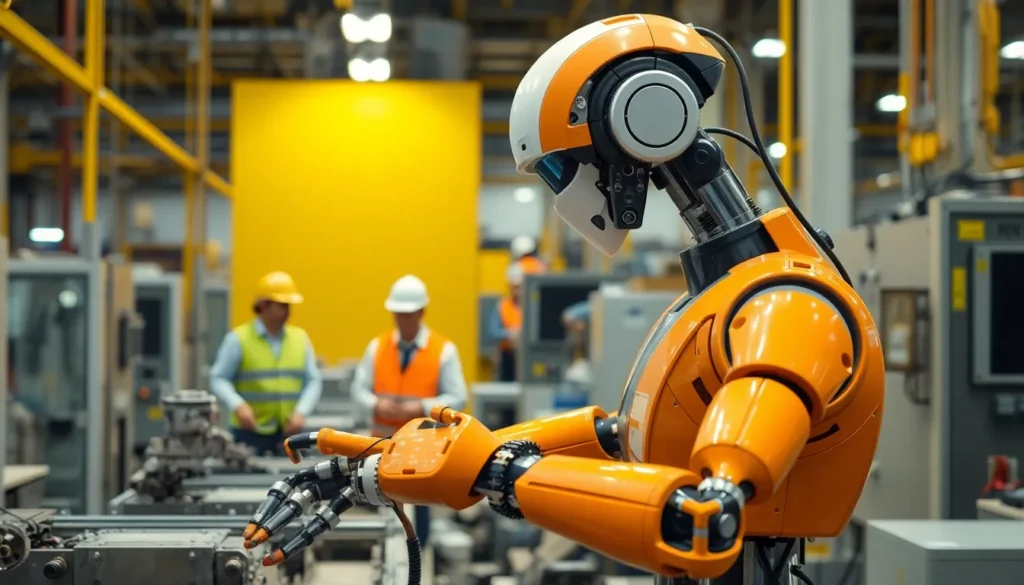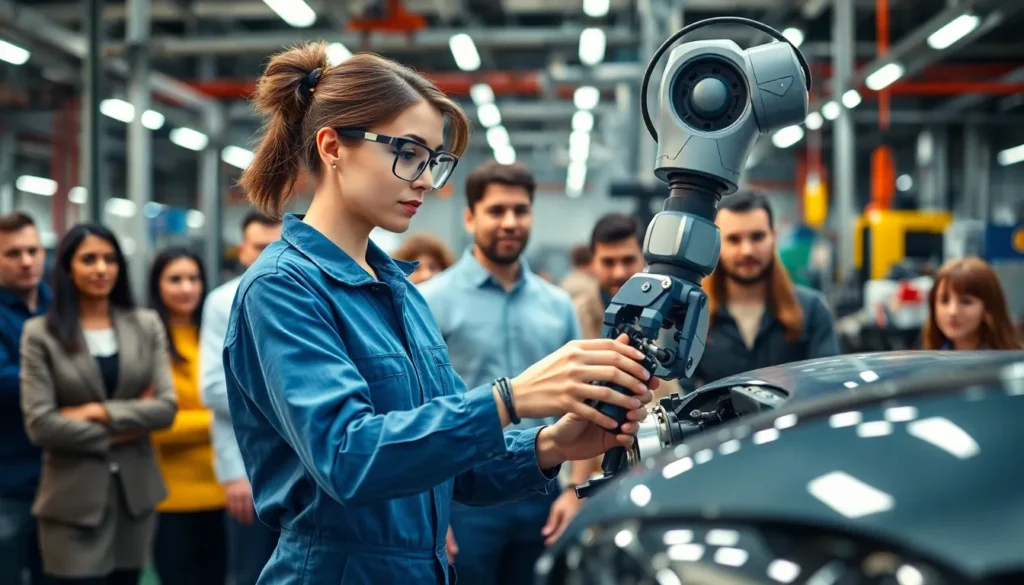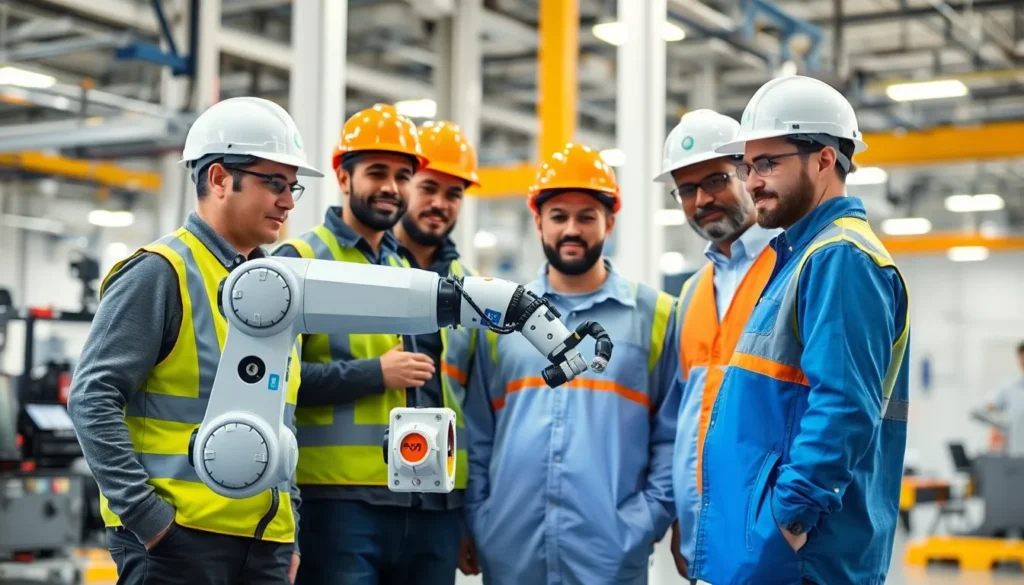Robotics isn’t just for sci-fi movies anymore; it’s here, and it’s changing the world one gadget at a time. From the friendly vacuum that zips around your living room to the sophisticated arms assembling cars in factories, robotics plays a crucial role in our daily lives. But wait—there’s more! The realm of robotics is vast and varied, with different types designed for specific tasks that’ll leave you wondering if we’re living in the future.
Types Of Robotics
Robotics encompasses several distinct types, each tailored to specific functions and environments. Industrial robots dominate production lines, performing repetitive tasks like welding and assembly, often enhancing efficiency and precision in manufacturing.
Service robots assist in various sectors. In healthcare, they support surgeries, deliver medications, and help with rehabilitation. This type of robot significantly improves patient care and optimizes workflows in medical facilities.
Mobile robots, another critical category, navigate environments autonomously. These robots often explore hazardous areas, making them invaluable in search and rescue missions. They also assist in agriculture, monitoring crops or livestock from field to field.
Humanoid robots mimic human form and functionality. Primarily utilized in research and entertainment, these robots engage in interactions that provide insights into human behavior. Their design reflects complex engineering principles, showcasing advances in artificial intelligence.
Educational robots enhance learning experiences. These platforms encourage students to engage with technology, fostering interest in STEM fields. By combining fun with education, they play a vital role in shaping future innovators.
Collaborative robots, or cobots, work alongside humans, enhancing human capabilities rather than replacing them. Many industries integrate these robots into operations as they adapt to human performance. Their ability to collaborate signifies a new era in workplace automation.
Together, these types exemplify the versatility and potential of robotics. Diverse applications across various industries signal ongoing advancements that improve efficiency and enhance daily tasks. This dynamic field continues to evolve, paving the way for further integration into everyday life.
Industrial Robotics

Industrial robotics plays a crucial role in enhancing productivity across various sectors. These machines streamline processes, reduce human error, and maintain high levels of output.
Applications in Manufacturing
Robots serve multiple purposes in manufacturing. They perform tasks like welding, painting, and assembly with precision. Many factories utilize articulated robots for intricate movements, while SCARA robots excel in assembly line work. Automated guided vehicles transport materials efficiently. Additionally, collaborative robots work directly alongside human operators, improving safety and productivity. Each application showcases the versatility of industrial robotics in terms of efficiency and reliability.
Benefits and Challenges
Numerous benefits accompany the use of industrial robots. They increase operational efficiency through speed and accuracy, leading to reduced production costs. Robots often operate in hazardous environments, minimizing risk to human workers. However, challenges also arise. High initial investment costs can limit adoption, especially for smaller businesses. Workforce displacement remains a concern, as automation replaces certain jobs. Balancing technological advancement with job security is crucial for sustainable growth in this sector.
Service Robotics
Service robotics encompasses robots designed to assist humans in various settings. These robots enhance daily tasks and streamline operations in both personal and professional environments.
Personal Service Robots
Personal service robots cater to individual needs, including household chores and elder care. Vacuuming robots autonomously clean floors, allowing users to focus on other tasks. Social robots provide companionship, especially for the elderly, reducing feelings of loneliness. In healthcare, assistive robots help with mobility, aiding individuals with disabilities. These robots utilize advanced sensors and artificial intelligence, enabling them to adapt to user preferences. Their contributions improve quality of life and foster independence.
Professional Service Robots
Professional service robots operate in workplaces, enhancing productivity and efficiency. In healthcare settings, surgical robots assist surgeons with precision, leading to less invasive procedures. Cleaning robots maintain hygiene in commercial spaces, such as offices and hospitals, freeing staff for more complex tasks. Delivery robots transport items within facilities, optimizing logistics and reducing human labor. The integration of these robots in industries maximizes operational efficiency while minimizing physical strain on workers. Their deployment signifies a shift towards automation in professional environments.
Collaborative Robotics
Collaborative robotics focuses on robots designed to work alongside humans, enhancing productivity and safety in various environments.
Human-Robot Interaction
Human-robot interaction is crucial for effective collaboration. Cobots typically feature intuitive interfaces, making them easy to program and interact with. Users can teach these robots tasks using demonstrations rather than complex programming languages. Additionally, effective communication between humans and robots relies on advanced sensors and artificial intelligence, recognizing human gestures or voice commands. This adaptability fosters a cooperative work environment, allowing robots to assist with tasks like assembly and packaging efficiently.
Safety and Efficiency
Safety and efficiency define the core principles of collaborative robotics. Cobots operate safely alongside people, equipped with sensors that detect nearby humans, pausing operations to prevent accidents. These safety features reduce workplace injuries significantly. Furthermore, the implementation of collaborative robots enhances operational efficiency by automating repetitive tasks, allowing human workers to focus on more complex challenges. In various industries, cobots increase overall productivity by streamlining workflow while ensuring a safe workspace.
Mobile Robotics
Mobile robotics involves robots that move through environments autonomously. This technology plays a pivotal role in various applications, enhancing efficiency and safety.
Autonomous Vehicles
Autonomous vehicles navigate through complex environments without human intervention. These vehicles use advanced sensors and AI to detect obstacles and make real-time decisions. Significant advancements in this area include self-driving cars that operate on highways and in urban settings. Major companies like Tesla and Waymo lead the development of these technologies, aiming for increased safety and reduced traffic congestion. Data from the National Highway Traffic Safety Administration indicates that self-driving technologies could potentially prevent over 90% of traffic accidents. This flexibility positions autonomous vehicles as a valuable future asset in transportation and logistics.
Drones and Aerial Robotics
Drones represent another facet of mobile robotics, enabling flight for various purposes. Aerial robotics has proven essential in sectors like agriculture, where drones monitor crop health and optimize resource use. Delivery services utilize drones for efficient package transport, significantly reducing delivery times. Notably, Amazon and Google have initiated drone delivery trials, showcasing the potential of this technology in urban logistics. Moreover, drones assist in search and rescue operations, offering real-time aerial reconnaissance in emergency scenarios. According to the Federal Aviation Administration, drone usage is projected to grow, with over 1.7 million registered drones in the United States alone by 2024. This surge illustrates the increasing reliance on drones for innovative solutions across multiple industries.
Soft Robotics
Soft robotics focuses on creating adaptable and flexible robots that can interact with their environment in a gentle manner. These robots utilize soft materials, which allow them to navigate complex terrains and manipulate delicate objects.
Characteristics and Innovations
Soft robotics incorporates unique characteristics, such as compliant structures that adapt to varying shapes and forces. These robots often use principles from biology, mimicking the movement of creatures like octopuses and worms. Innovations in this field enable the development of actuators that respond to changes in pressure, temperature, or even electromagnetic fields. Customizable designs ensure versatility, making soft robots suitable for applications ranging from minimally invasive surgical tools to assistive devices for individuals with disabilities. The potential of soft robotics lies in its ability to perform tasks without causing harm, thus expanding its usage in environments that require delicate handling.
Conclusion
The landscape of robotics continues to evolve rapidly, showcasing its diverse applications across various sectors. From industrial automation to personal assistance, each type of robot serves a unique purpose that enhances efficiency and productivity. The integration of advanced technologies such as AI and sensors further amplifies their capabilities, paving the way for groundbreaking innovations.
As robotics becomes increasingly embedded in daily life, the importance of understanding these different types cannot be overstated. This knowledge empowers individuals and businesses to leverage robotic solutions effectively. The future holds immense potential as advancements in robotics promise to transform industries and improve quality of life.



